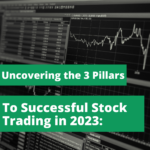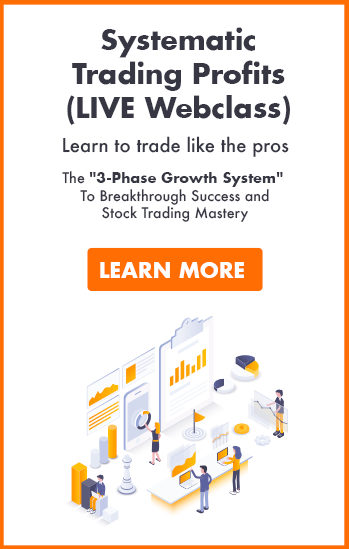Beginner’s Guide: 3 Biggest Mistakes Traders Make And How To Avoid Them
Mistakes… On one hand, we wouldn’t learn some important lessons without experiencing the pain of mistakes. Yet on another, we wish we could have avoided going through those tough periods. When it comes to trading mistakes, the consequences might be rather dire.
They come in the form of money, time, and sometimes even relationships.
While we all have our learning journeys, this article in our Beginner’s Guide will likely resonate with most experienced traders. Unless you’ve received guidance right from the beginning of your trading journey, and followed strictly by that, it is quite likely that you would have fallen into at least one of the below pitfalls.
If you’ve yet to get started, it’s all the better that you have an awareness of what could go wrong. And if you can, avoid them altogether.
Although by no means an exhaustive list, let’s take a look at 3 common mistakes that traders are susceptible to, especially early on in their trading journeys.

1. Acting On Hearsay & “Tips”
In other words, this could be thought of as recommendations or advice. We all love a good deal, and most of us enjoy being let in on “secrets”. Perhaps it is also the element of laziness – why go through all that trouble when there are tips to follow? After all, someone has done the homework, and there must be some reason why this tip exists… Right?
Well, assuming that the information is reliable and well-meaning, there nonetheless remains questions.
All may seem well when the stock goes the way you want. But what happens when it moves against you?
Do you blame the source, or do you take responsibility for executing the trade?
The disclaimers (like we put up on this blog as well) to do your own due diligence (DYODD) is meant not only for you to verify the information, but also to facilitate your understanding of the subject. While one can provide the knowledge to you, and there may even be conflicting views by different parties…
It is best that you form your own view and understanding.
Many a times, our timeframe differs (i.e. your trading/investing horizon), as do our risk tolerances. Furthermore, we would likely have different convictions about the stock. Ultimately, our beliefs are shaped by our respective encounters and understanding, which sets us apart in our decision-making.
What is perceived to be of value to you, will not necessarily be thought of in the same manner by another. If someone is bullish despite the downtrend, do you copy that conviction, or do you investigate further?
In the end, if there are so many variables to consider, why would you want to risk the consequences of taking up the “tip”?
This brings me to my next point, which is on the exit plan.

2. Not Having An Exit Plan
The key indicator of not having an exit plan, is to find yourself glued to the trading screen. You’re watching the stock price rise and fall, constantly changing your mind about what to do about your positions. And before you know it, a considerable amount of time has passed…
Alternatively, instead of just looking at the stock movements, you could be in a flurry of activity – asking around for urgent advice on what you should do in the current situation. As the stock continues making its move against you, you’re waiting for the golden piece of advice which could prevent you from taking on the losses. You hope there is a guru out there who knows exactly what you’re going through and can save you from the red of your portfolio.
Perhaps I exaggerated a little there, but you get the point.
What Does an Exit Plan Do For You?
Having an exit plan entails clarity in your trades. Before executing it, you should already have clear ideas of:
- How much you are willing to lose, if you are wrong in your trade
- Where or how you intend to take profits, if you are right
The reverse also holds true. When emotions drive your decision-making, this could be the result of not having an exit plan:
- Refusal to cut losses, and hoping that the trade will eventually turn out well
- Taking profits too early for fear of any gains being reversed, only to regret that decision later on
- Taking profits too late, or even allowing the profits to turn to losses due to an initial greed of hoping that the stock would soar higher
When you don’t have an exit plan, fear, uncertainty and doubt (FUD) will cloud your decision-making. Emotions sway you, because it is your hard-earned money that is at stake here.
To be clear, having an exit plan is easier said than done. On one hand it takes knowledge to formulate your exit plans. On another, it takes discipline to stand by them.
Nonetheless it is worth the while to have clarity in your trades so that you can not only sleep well, but also see your account size grow steadily.
Then, if you find that the exits could be done better when reviewing your trading journal, work on improving them to develop a style that suits you best.

3. Hoping It’s A Lottery Ticket
When GameStop and AMC made headlines with their multi-fold stock price, I’m sure most of us would have this thought cross our minds:
“If only I had bought it when it was cheap. Heck, I should have thrown everything in!”
Or an older iteration of that might be…
“I should have bought some Bitcoins back then. It’s exploded in value now!”
Another common juxtaposition would be the lottery. After all, the amount that you spend could return manifold.
When you see the huge gains, the fear of missing out (FOMO) kicks in uninvitedly, and you wonder how to make this happen for yourself.
The question to ask here, is whether you view stocks as a pure game of luck and chance. Do you perceive all stocks the same way as you do with meme stocks?
Even as you “place your bets”, there is a way to do it, in a sustainable manner.
Which is, to first understand and limit your risks. Assess your risk-to-reward ratio.
Do you scale-in your positions or do you go all-in? Do you have sufficient “baskets” for you to house your “eggs”? (Don’t put all your eggs in one basket.)
While this can be challenging to do especially for smaller-sized accounts, remember that the long-term goal is to stay in the game. And for that to happen, you need capital, and to have that capital growing.
The only realistic way around it is to manage your risks. Lose a little when you are wrong and win more when you are right. When you manage your downside, the upside will take care of itself.
It pays to remember that when you lose, someone else is winning. These winners would be waiting for new losers to join the game, flush them out, and the cycle repeats.

Conclusion: 3 Biggest Trading Mistakes To Avoid
As much as we dislike labelling ourselves as “losers”, this mentality is actually a helpful one when it comes to trading. (More on this in an earlier part of the book review series.)
It is the awareness of how much financial damage you could do to your account, that pulls you back from taking on more than the predetermined risk.
So before you execute your next trade, remember to pause and ask yourself a few simple questions:
- Why am I executing this trade? What is the basis, and is there a better trade out there?
- What do I want to get out of this trade? Be as specific as possible in stating your exit plan.
- Is it FOMO or FUD that is driving this action? Am I applying adequate risk management?
While there is indeed no way of accurately predicting a stock’s movement, there are actually tools and analyses which can help in making informed decisions. I shall leave that as a topic for subsequent parts of this series.
For now, asking the questions above should suffice in not having your account blow-up. Doing this exercise as you go through your trades will make it come as second-nature as you look to improve your trading knowledge and skills.
And, when you see your account growing…
I assure you that the learning and discipline will make it, literally, rewarding.
Can anybody start trading and investing on their own? If you’ve read up to this point, the answer is a resounding yes. Stay tuned to the next parts of the series as we adopt a systematic approach in generating a step-by-step beginner’s guide.
If you’d like to get a FREE e-course and learn how to better time your trade entries, click the banner below:













